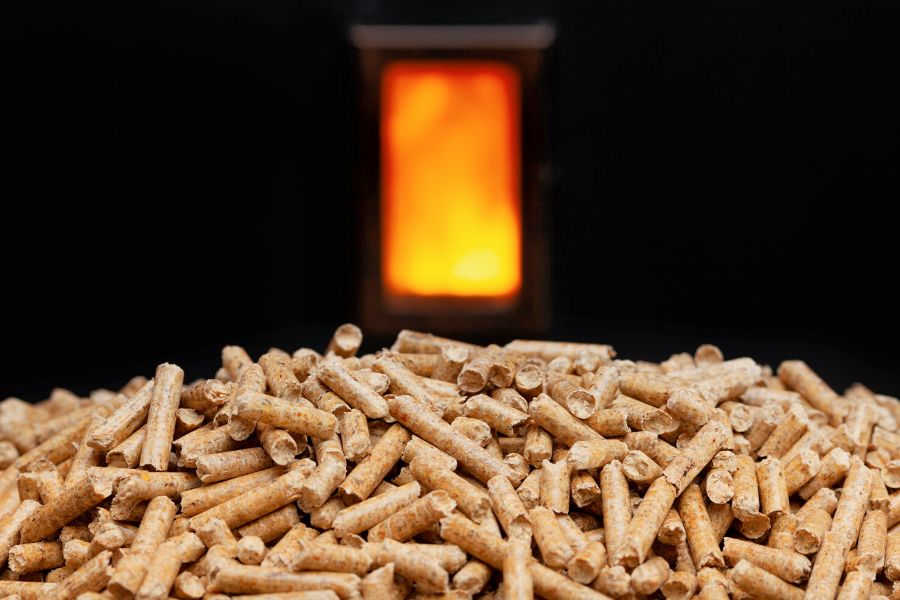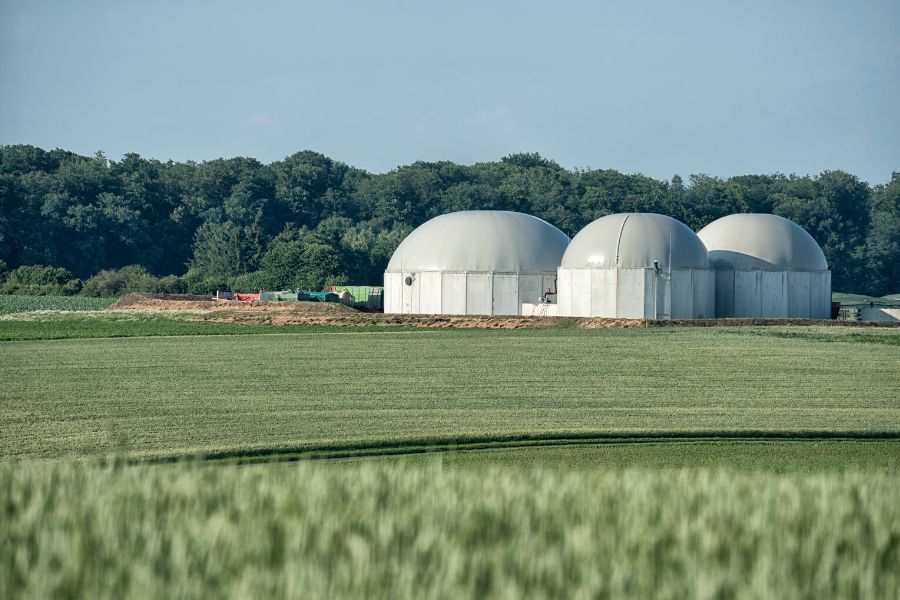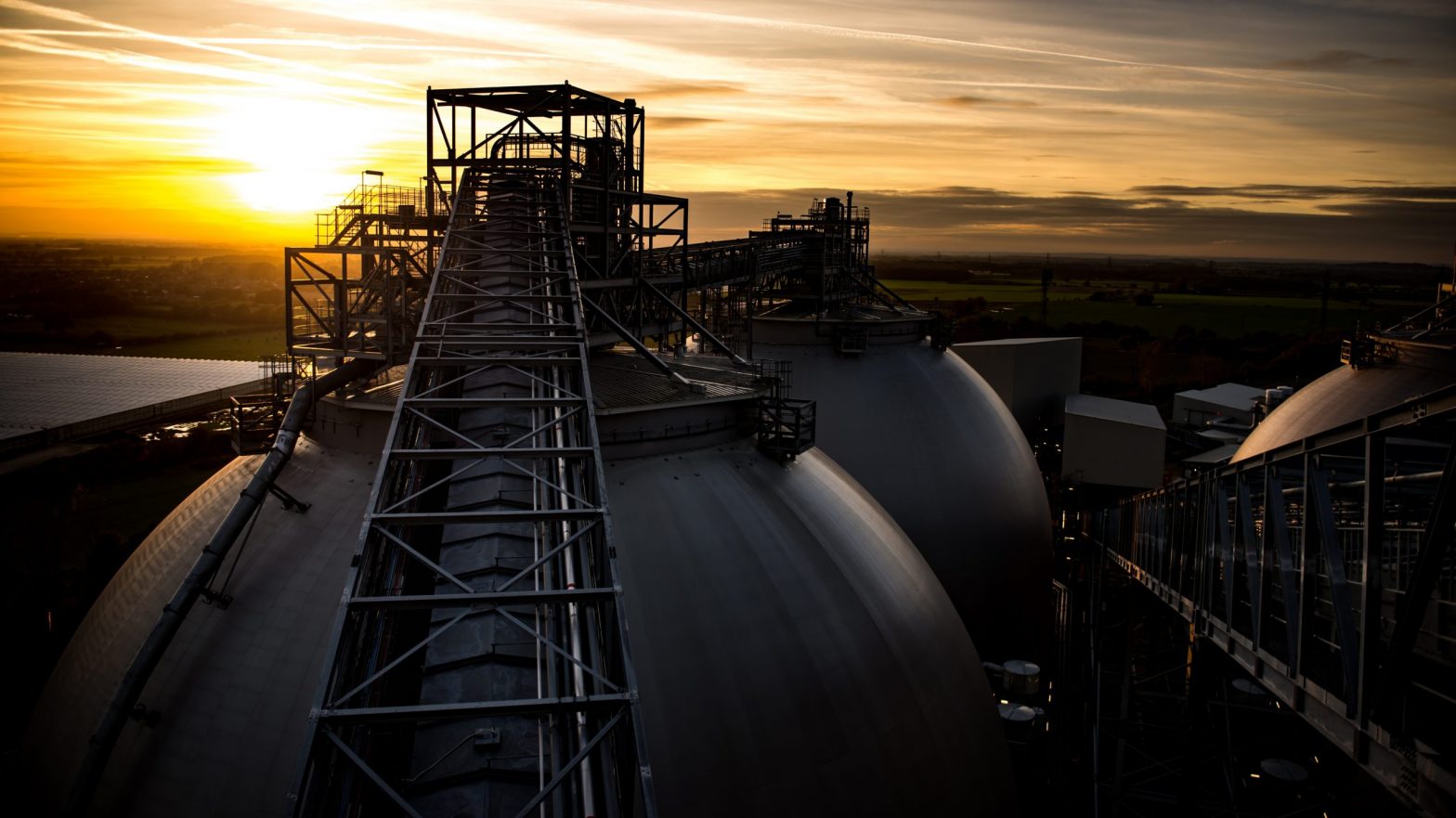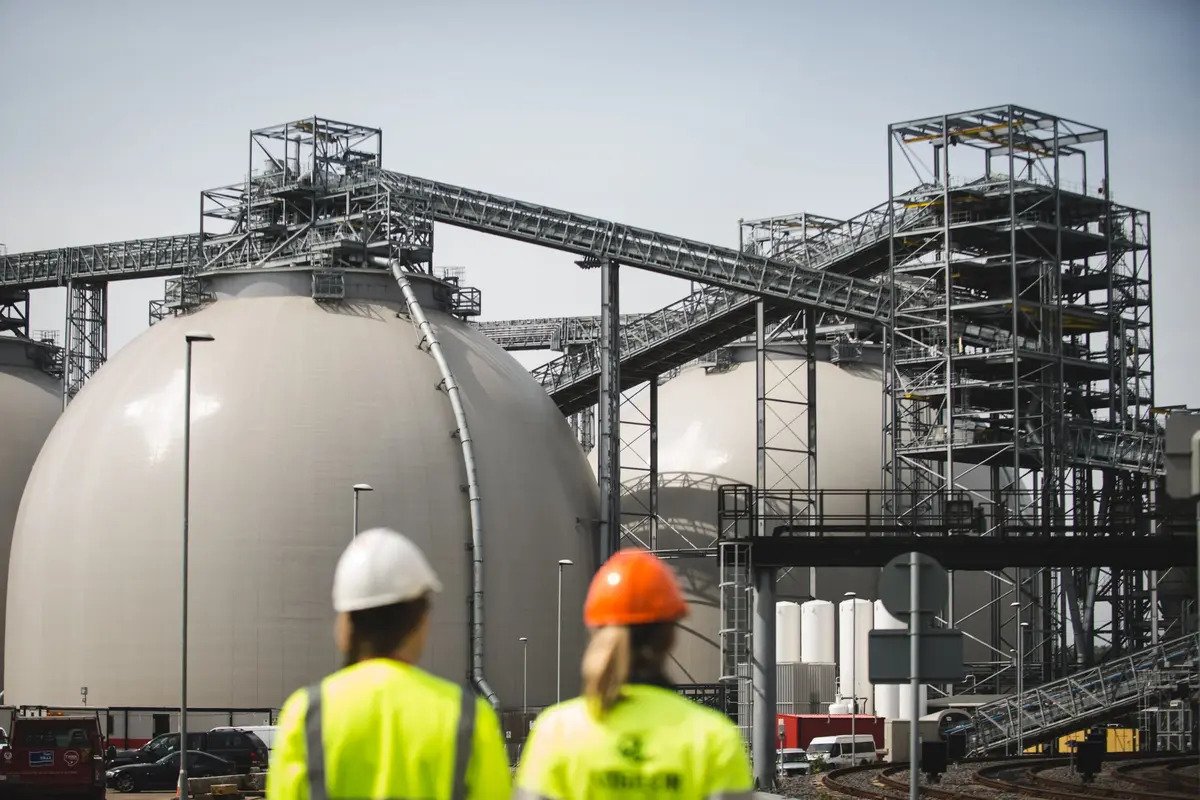In our quest for sustainable and renewable energy sources, biomass has emerged as a promising contender. Biomass energy harnesses the power of organic matter, such as plants and agricultural waste, to generate electricity, heat, and even fuel, such as biomethane.
Understanding the conversion between power and electric current is fundamental to grasping how energy is generated and used. For instance, you can use this watts to amps calculator to see the relationship between these two units.
In this article, we will delve into the inner workings of biomass energy and explore its benefits, challenges, and potential for a greener future.
What is Biomass?

Biomass is organic material derived from living organisms or recently living plants and trees. It includes resources like crop residues, forestry residues, wood chips, sawdust, agricultural waste, and dedicated energy crops.
Unlike fossil fuels, biomass energy is considered carbon-neutral as the CO2 emitted during combustion is offset by the CO2 absorbed during plant growth.
Converting biomass into energy involves several steps, contributing to the efficient utilization of organic matter. Biomass can generate electricity and produce renewable biomass fuels.
We can reduce carbon dioxide emissions by harnessing biomass energy and utilizing sustainable energy sources for electricity generation.
Converting biomass into energy involves several steps, each contributing to efficiently utilizing organic matter. Let’s explore the critical elements of biomass energy:
Collection and Preparation
Materials are gathered from diverse sources like forests, farms, and industries to harness the power of biomass.
Before utilization, these resources undergo preprocessing to eliminate impurities such as rocks, metals, and excessive moisture. The preparation process may involve chipping, shredding, or pelletizing the biomass, enhancing its combustion efficiency in biomass plants.
Collecting and preparing biomass materials can unlock their potential to produce electricity and biomass fuels.
Carbon dioxide emissions are generated through biomass combustion, but since the plants absorb an equivalent amount of CO2 during their growth, the process remains carbon-neutral.
As a result, electricity generated from biomass contributes to sustainable energy production while minimizing the environmental impact.
Combustion

Biomass energy is primarily harnessed through direct combustion. Biomass is burned in specialized furnaces or boilers, where the resulting heat converts water into steam. This steam drives a turbine connected to a generator to generate electricity ultimately.
Moreover, the heat produced during combustion can be utilized for space heating, water heating, and various industrial processes.
By using biomass for combustion, we can generate energy and produce electricity, reducing reliance on burning fossil fuels.
Biomass sources include plant-based materials and human and animal waste, providing an environmentally friendly solution for sustainable energy production.
Gasification
Gasification is an alternative process that converts biomass into a combustible gas called producer gas or syngas. By heating biomass in a low-oxygen environment, we create a gas rich in carbon monoxide (CO), hydrogen (H2), and methane (CH4).
Syngas has versatile applications, including generating electricity and providing heat. It can also be refined into biofuels like ethanol or biodiesel.
This process helps reduce carbon dioxide emissions by utilizing biomass as a renewable energy source. Whether directly or refined into biofuels, syngas offers an environmentally friendly option for generating electricity and sustainably meeting energy needs.
Anaerobic Digestion
Anaerobic digestion is a process where microorganisms decompose organic matter without oxygen. This method treats biomass and produces biogas mainly of methane and carbon dioxide.
Biogas finds applications in heating and electricity generation and can be refined to enhance methane content, creating renewable natural gas.
The generated biogas can generate electricity, providing a sustainable energy source. Anaerobic digestion effectively manages biomass waste and harnesses its potential to produce biogas for various energy needs, contributing to a greener and more sustainable energy future.
Pyrolysis
Pyrolysis is a process that involves heating biomass without oxygen, resulting in the production of biochar, bio-oil, and syngas.
Biochar, a charcoal-like material, enhances soil fertility and aids carbon sequestration. Bio-oil, a liquid product, can be refined into transportation fuels or used in industrial applications.
Pyrolysis offers a valuable way to convert biomass into useful products, promoting soil health and providing alternatives to conventional fossil fuels. We can contribute to a more sustainable and eco-friendly future by harnessing the potential of pyrolysis.
Benefits of Biomass Energy

Biomass offers numerous advantages that make it an attractive renewable energy option. Below are some of the benefits of biomass:
Carbon Neutrality
Biomass energy is carbon-neutral, unlike fossil fuels, as it releases CO2 that is already part of the natural carbon cycle without adding new carbon to the atmosphere. This characteristic makes biomass a sustainable solution for reducing greenhouse gas emissions.
When biomass is used for energy production, the CO2 emitted during combustion is offset by the CO2 absorbed by plants during their growth.
By embracing biomass as an energy source, we can effectively contribute to reducing our carbon footprint and play a significant role in mitigating climate change.
Waste Management
Biomass energy offers an efficient solution for managing organic waste materials that would otherwise contribute to methane emissions from landfills or natural decomposition.
Utilizing these waste materials for biomass energy production can prevent the release of methane, a potent greenhouse gas, into the atmosphere.
Instead of letting organic waste go to waste, biomass energy enables us to extract valuable energy from these materials, reducing environmental impacts and promoting a more sustainable waste management approach.
We can turn waste into a valuable resource with biomass energy and contribute to a cleaner and greener future.
Renewable and Localized
Biomass resources offer the advantage of renewability, as we can regrow crops and plants. This renewable nature ensures a continuous supply of biomass energy.
Additionally, the localized availability of biomass resources reduces dependence on imported energy sources, fostering energy self-sufficiency and promoting regional economic development.
By harnessing local biomass materials, communities can create a sustainable energy ecosystem that reduces carbon emissions and supports local economies, creating jobs and stimulating growth.
The renewable and localized nature of biomass energy makes it a compelling choice for a greener and more resilient energy future.
Versatility
Biomass energy offers versatility through various technologies, such as combustion, gasification, anaerobic digestion, and pyrolysis. This versatility allows for the adaptation of biomass energy to different applications and energy requirements.
Whether generating electricity through combustion or producing biogas through anaerobic digestion, biomass energy provides flexible solutions to meet diverse energy needs.
By leveraging the versatility of biomass energy technologies, we can maximize its potential and create a sustainable energy landscape that addresses various environmental and economic challenges.
Challenges of Biomasss
However, biomass energy is not without its challenges. Below are some of its challenges:
Resource Sustainability
Ensuring a sustainable biomass feedstock supply prevents deforestation, soil degradation, and competition with food crops. Responsible land management and dedicated energy crops can help address these concerns.
Emissions and Air Quality
While biomass energy is considered carbon-neutral, combustion processes can emit pollutants such as particulate matter, nitrogen oxides, and volatile organic compounds.
Employing advanced emission control technologies is essential to mitigate these environmental impacts.
Efficiency and Energy Density
Biomass energy systems typically have lower energy density than fossil fuels, requiring larger feedstock volumes for equivalent energy output.
Continuous advancements in technology are necessary to improve efficiency and optimize biomass-to-energy conversion.
Conclusion
Biomass energy holds great promise as a sustainable and renewable energy source. It offers a means to effectively utilize organic waste materials and dedicated energy crops, reducing greenhouse gas emissions, bolstering local economies, and providing a reliable energy supply.
However, ensuring the long-term sustainability of biomass energy and unlocking its full potential requires addressing concerns related to sustainability and investing in ongoing research and development efforts.
By doing so, we can maximize the benefits of biomass energy and pave the way for a greener future built on renewable and environmentally friendly energy sources.


